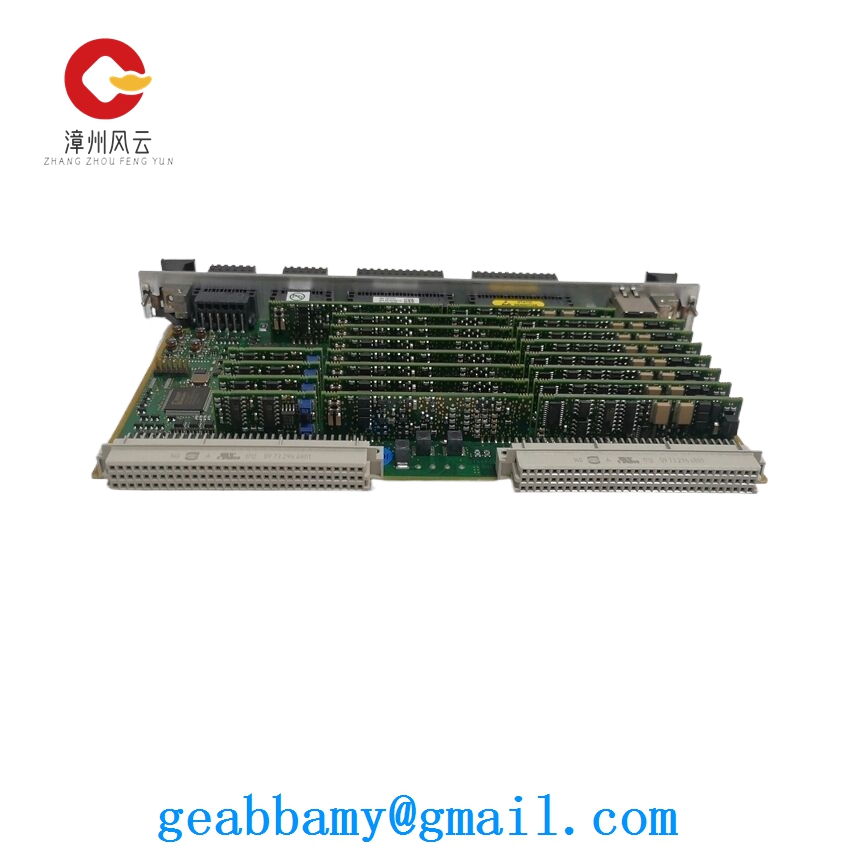Technical Parameters of Valmet NCA2 Board

1. General Overview
The Valmet NCA2 board is a key component in Valmet’s industrial control and automation systems, commonly used in sectors such as pulp and paper, energy, and other process industries. It serves as a versatile interface and control unit, facilitating seamless integration of various devices and enabling efficient process monitoring and control.
2. Hardware Specifications
- Processor
- Type: It is equipped with a high – performance industrial – grade microprocessor. This processor is optimized for real – time operations, capable of handling multiple tasks simultaneously with minimal latency. For example, in a pulp mill, it can process input signals from numerous sensors, execute complex control algorithms for paper quality regulation, and generate output commands to control actuators within strict time frames, ensuring stable and high – quality production.
- Clock Speed: The clock speed of the processor is designed to meet the demanding requirements of industrial control applications. A typical clock speed may be in the range of several hundred megahertz, providing sufficient computational power for fast data processing and decision – making.
- Memory
- RAM: The board has a sufficient amount of Random Access Memory (RAM) to store temporary data, program instructions, and intermediate results during operation. The RAM capacity allows for smooth execution of complex control programs. For instance, it can store real – time process data for several seconds, enabling quick analysis and response to process changes.
- Flash Memory: Non – volatile flash memory is included for storing the firmware, configuration settings, and user – defined programs. This ensures that the data is retained even when the power is turned off. The flash memory can be reprogrammed, allowing for software updates and modifications to the control logic as needed, without the need for hardware replacement.
- I/O Ports
- Digital I/O:
- Number of Channels: The NCA2 board offers a configurable number of digital input and output channels. The exact number may vary depending on the specific model, but it is designed to meet the requirements of a wide range of industrial applications. For example, it can have 16 or more digital input channels to detect the on/off states of switches, limit sensors, and other digital devices in the industrial environment.
- Functionality: Digital inputs can be used for functions such as start/stop commands, fault detection, and status monitoring. Digital outputs can control actuators, relays, and other digital devices, enabling precise control of the industrial process.
- Analog I/O:
- Number of Channels: It also supports analog input and output channels. The number of analog channels can be adjusted according to the application needs. For instance, it may have 8 analog input channels for measuring continuous signals such as temperature, pressure, level, and flow.
- Resolution and Accuracy: The analog I/O channels have high resolution and accuracy. A 12 – bit or higher resolution is common, allowing for precise measurement and control of analog variables. The accuracy is typically specified as a percentage of the full – scale range, ensuring that the actual values closely match the intended control signals.
- Digital I/O:
3. Communication Capabilities
- Fieldbus Interfaces
- The NCA2 board is equipped with multiple fieldbus interfaces, such as Profibus, Modbus, and Foundation Fieldbus. These interfaces enable seamless communication with other devices in the industrial network, including sensors, actuators, programmable logic controllers (PLCs), and human – machine interfaces (HMIs). For example, through a Profibus interface, the board can exchange data with multiple devices in a master – slave configuration, allowing for centralized control and monitoring of the industrial process.
- Ethernet Connectivity
- It has an Ethernet port for high – speed data communication. Ethernet connectivity allows for remote access to the board, enabling engineers and technicians to monitor and configure the system from a central location. It also facilitates integration with enterprise – level systems, such as supervisory control and data acquisition (SCADA) systems, for large – scale process monitoring and control. For instance, a plant manager can access real – time process data from the NCA2 board via the Ethernet network using a SCADA system, even from a remote office.
4. Power Supply
- Input Voltage Range: The board operates within a specific input voltage range, typically from 20.4 V DC to 28.8 V DC. This wide voltage range provides some flexibility in power supply selection and helps to ensure stable operation even with minor voltage fluctuations in the industrial environment.
- Power Consumption: It has a relatively low power consumption, which is beneficial for reducing energy costs and heat generation in the control cabinet. The exact power consumption value depends on the operating mode and the number of active I/O channels, but it is generally designed to be energy – efficient.
5. Environmental Specifications
- Operating Temperature: The Valmet NCA2 board can operate within a wide temperature range, usually from – 20°C to + 60°C. This allows it to be used in various industrial environments, including harsh conditions such as factories, power plants, and outdoor installations where temperature conditions may vary significantly.
- Humidity Range: It can withstand a relative humidity range of 5% to 95% (non – condensing), ensuring reliable operation in humid industrial settings.
- Shock and Vibration Resistance: The board is built to withstand shock and vibration levels commonly encountered in industrial applications. It meets relevant industrial standards for shock and vibration resistance, minimizing the risk of damage during transportation, installation, and operation.
6. Software and Programming
- Supported Programming Languages: The board can be programmed using standard industrial programming languages such as ladder logic (LD), function block diagram (FBD), and structured text (ST). These programming languages provide flexibility for engineers and technicians to develop control programs according to their preferences and the specific requirements of the application.
- Software Development Tools: Valmet provides a comprehensive software development environment for programming, configuring, and monitoring the NCA2 board. The software offers features such as online debugging, simulation, and data logging, which help to streamline the development and commissioning process of the automation system. For example, engineers can use the simulation feature to test the control program before deploying it in the actual industrial environment, reducing the risk of errors and downtime.
In summary, the Valmet NCA2 board is a robust and feature – rich industrial control board with high – performance hardware, versatile communication capabilities, and excellent environmental resilience, making it suitable for a wide range of industrial automation applications.


